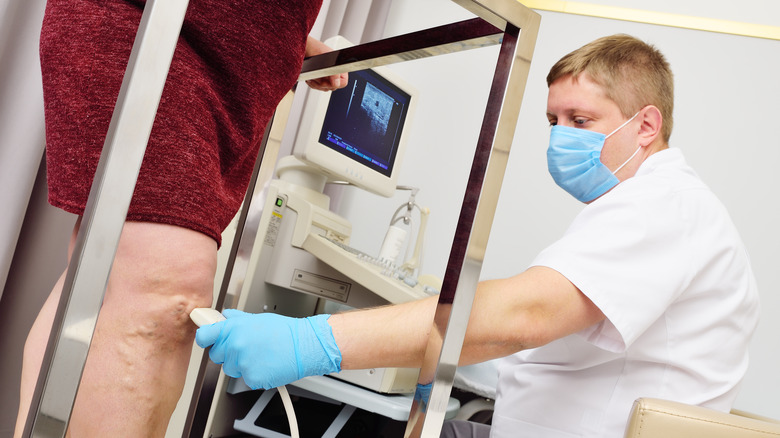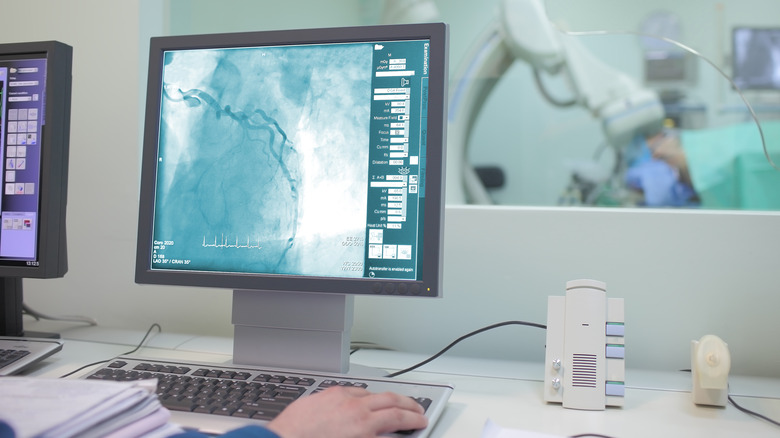Where Can Blood Clots Form On Your Body?
Blood clots are a serious health concern because they can block blood flow and cause tissue death. While most blood clots form within veins, they can also occur in arteries or heart chambers. Blood clots can form anywhere in the body, but there are some specific areas where they are more likely to occur (via Healthline). Some of the most common places for blood clots to form include the legs, pelvis, arms, head, and neck. Blood clots can also form in other less common areas such as the heart and lungs.
No matter where a blood clot forms, it is important to seek medical attention as soon as possible. Blood clots can be life-threatening and should be treated by a medical professional. Blood clots form when a blood vessel is injured and the body's natural clotting mechanism is activated. These blood clots should dissolve naturally, but can cause problems when they don't dissolve. Blood clots can also form when there is a change in blood flow, such as when you are pregnant or taking certain medications. If a blood clot forms in an artery, it can block the flow of oxygen-rich blood to the heart or brain and cause a heart attack or stroke. If a blood clot forms in veins, it can cut off the blood supply to an area of the body and cause pain, swelling, and tissue death.
What to know about blood clots
Blood clots are more common than you might think. According to the American Society of Hematology, as many as 900,000 Americans are affected by them each year. There are a few different types of blood clots, but the most common is deep vein thrombosis (DVT), which occurs when a clot forms in one of the deep veins in your body, usually in your legs. Symptoms of a DVT can include pain, swelling, and redness in the affected area. If the clot breaks loose and travels to your lungs, it can cause a pulmonary embolism, which can be life-threatening.
If you think you might have a blood clot, it's important to see a doctor right away. They will be able to confirm the diagnosis and start you on treatment. Symptoms of a blood clot include swelling, change in color, pain, warm skin, trouble breathing, and cramps (via WebMD). Treatment for blood clots typically includes blood thinners, which help to dissolve the clot and prevent new ones from forming. In some cases, surgery may also be necessary to remove the clot. If you have a blood clot, it's important to take care of yourself and follow your doctor's orders. With proper treatment, most people make a full recovery and go on to live healthy lives.


